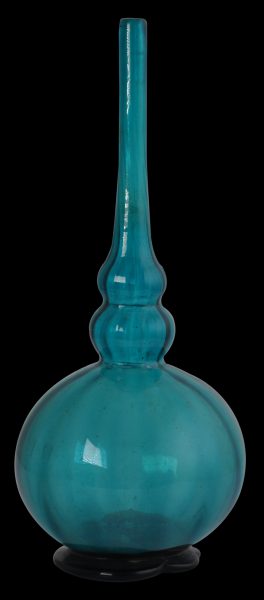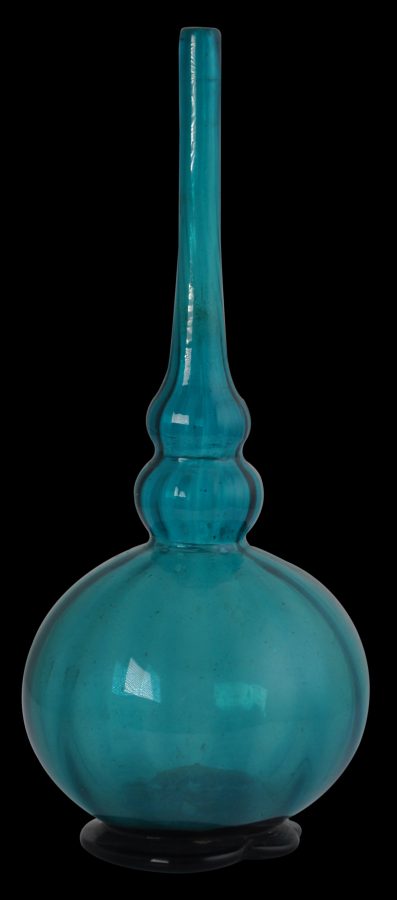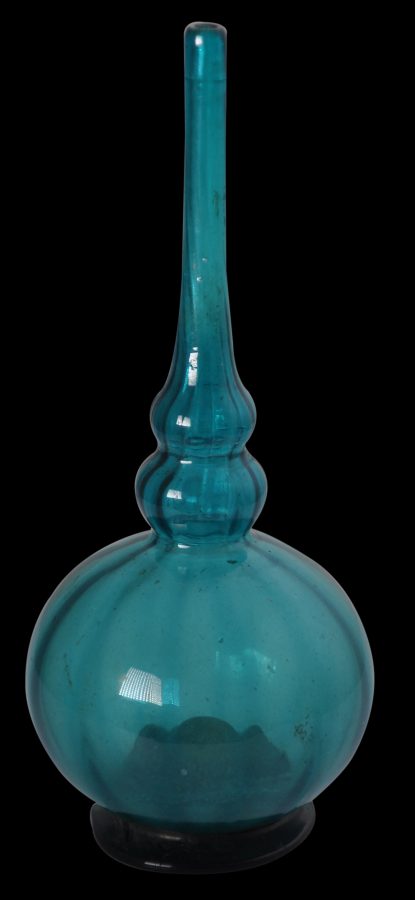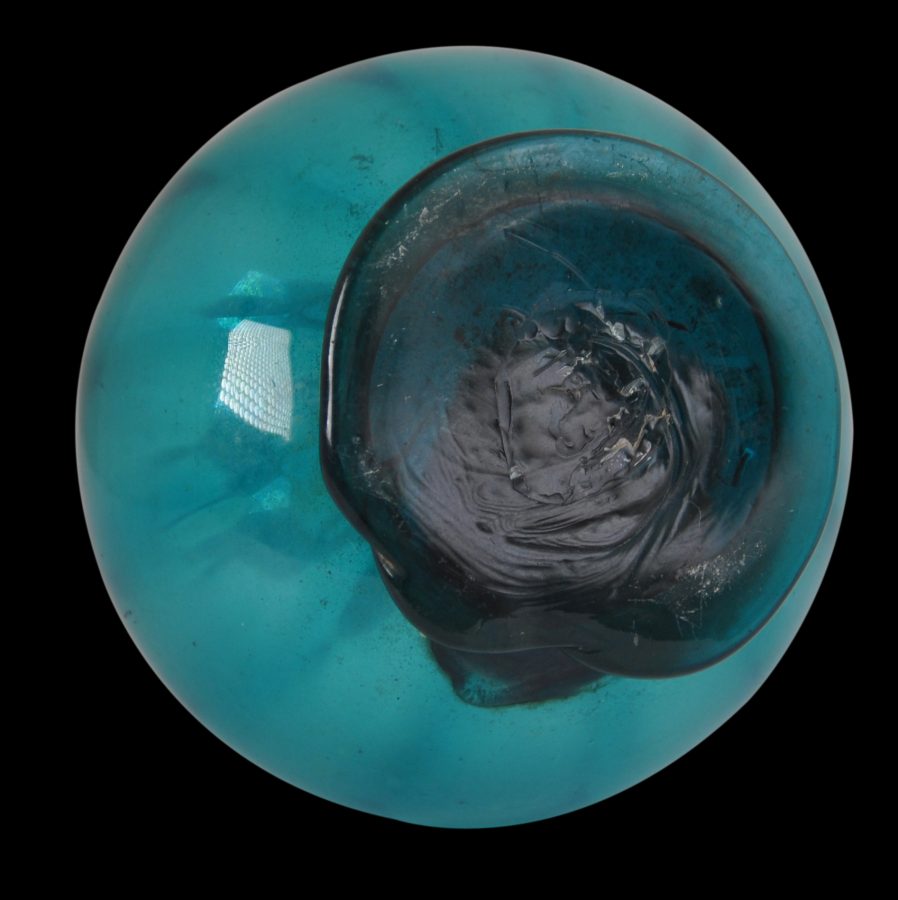This elegant green glass rosewater sprinkler sits on a flared foot, has a spherical body and a baluster-form, tapering neck. Both body and neck have light, vertical ribs.
Such glass sprinklers were popular in Deccani and Mughal India in the late 18th and early 19th centuries. Their precise place of manufacture is uncertain. Either they were made in Europe and possibly England for export to India, or they might have been made in India itself, probably in Gujarat. It is likely that those (such as this example) which have turned up in the UK travelled back to the UK during colonial times. Carboni (2001, p. 290) makes the point that regardless of the place of manufacture, what is clear is that this type of sprinkler was made only for the northern Indian market rather than also being made for elsewhere in the Islamic world.
A glass rosewater sprinkler that ostensibly is similar is in the David Collection in Copenhagen and it is attributed to 18th-19th century Iran (von Folsach, 2001, p. 223).
The example here is without cracks, chips, or repairs. The sprinkler sits perfectly and evenly, although the ring foot is uneven around the edge, an element that was introduced at the time of manufacture. The glass appears to be free of bubbles which is indicative of European manufacture, but the uneven edge to the foot suggests Indian manufacture (Carboni, 2002, p. 289 makes a similar argument.)
References
Carboni, S., & Whitehouse, D., Glass of the Sultans, The Metropolitan Museum of Art, New York, 2001.
Folsach, K., von, Art from the World of Islam: in the David Collection, 2001.





